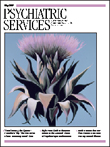Epileptic
David B's autobiographical graphic novel, Epileptic , recounts his childhood in a small town near Orléans, France. He later changes his name to David, but the narrator is called by his given name, Pierre-François, or his nickname, "Fafou," throughout the majority of the book. The story focuses on the author's relationship to his family, the focal point of which is his older brother, Jean-Christophe, who develops epilepsy at age 11. The novel is extremely articulate in demonstrating how a disease suffered by an individual, afflicts an entire family.
For readers unfamiliar with graphic novels, such books appear as extended comic strips with a series of panels that read left to right and top to bottom. This book consists of a couple thousand panels, with both text bars and spoken word bubbles, drawn in black ink. David's drawing style, which does not employ chiaroscuro as a means of giving a perceived three-dimensional depth to the images, creates an appropriately flat world. The lack of depth accentuates the claustrophobic enclosure cast over the family by Jean-Christophe's epilepsy, while the stark black-and-white contrast allows David to cast his characters in a world of sinister shadows and visions. The characters and drawings frequently include frightening creatures and scenes conjured by David's childhood imagination.
Jean-Christophe's seizures are represented rather stereotypically, and the narrative gives little technical or medical analysis of epilepsy. Needless to say, this is a subjective account and would not be especially helpful as a case study of epilepsy. Instead, David casts the disease as a literally black monster that haunts the entire family. The family attempts to battle the disease with a variety of treatments. When surgery is suggested, the family turns to a variety of less conventional means, such as magnetism, hypnosis, psychic seers, and a macrobiotic diet. Each new method forces the family to adapt to yet another way of life and often a new home. The strain placed on the family's cohesion is felt throughout the story and foreshadows the relationship between David and his brother later in life.
David's parents actively search for ways to stifle the seizures, while Jean-Christophe passively suffers through them. David's need to fight his brother's epilepsy forms because of his brother's passivity. David, in turn, is so incredibly frustrated that he is forced into an imaginary world. He often imagines himself as a warrior, clad in an armor that protects him from the evils of the world. His grandfather's spirit, depicted as a man with a birdlike head, accompanies him in his imaginary world. This world is his sanctuary, where he can defeat the physical form of his brother's illness, a task which neither Jean-Christophe nor his parents have managed.
David's story is experienced by many. Illness always creates tension in relationships, and when there is no cure, the illness becomes an obstacle in forming a close bond. What makes Epileptic such an engaging book is the artistic rendition of the story and David's detailed recollection of his childhood, including his wild imagination. For readers not troubled by an intense, and at times dark, story, Epileptic provides a compelling, graphic narrative.



